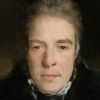A Singularly Vile Public Memorial
Unlike Confederate monuments, there is no fig leaf of heritage for this obelisk of hate to hide behind.
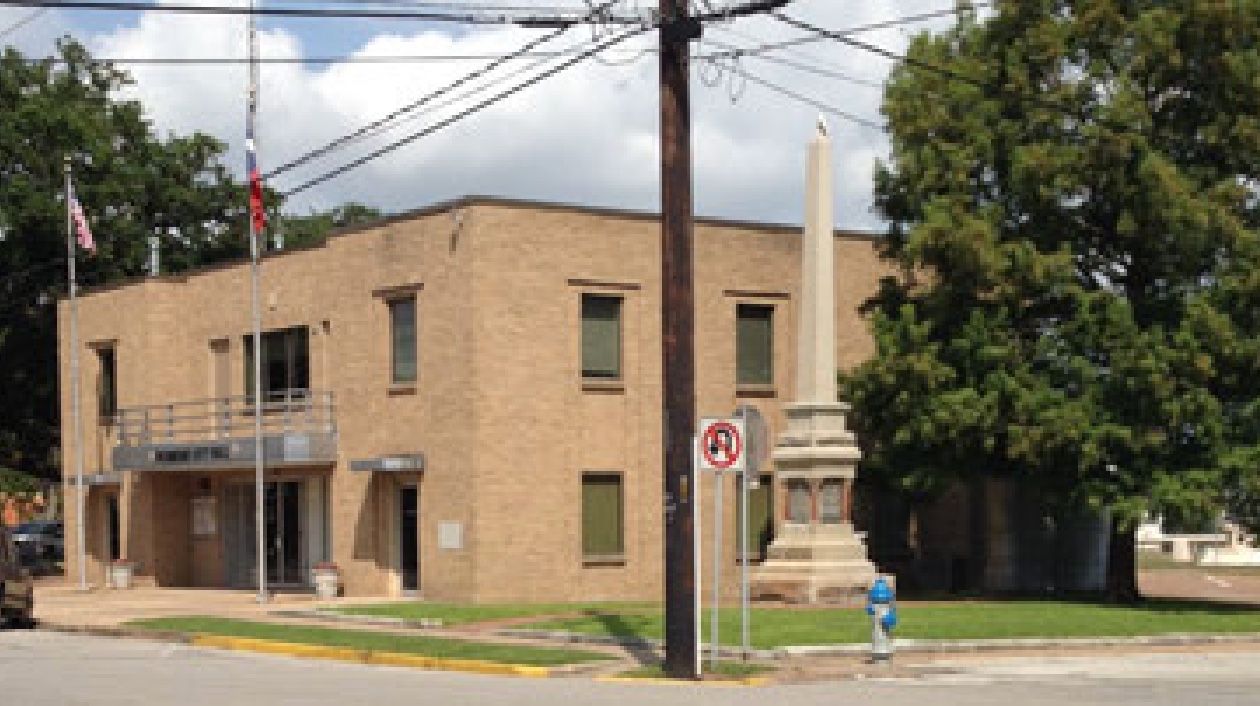
About two years ago, amid the scariest days of the early pandemic and at a loss for things to do, Harriet and I decided to blaze down South Main all the way to Richmond, county seat of Fort Bend, and once, long before the meteoric rise of Sugar Land, the area's sole metropolis.
There's not much left to the older parts of the charming old town, and what little remains was entirely deserted today...zombie apocalypse level of abandonment. So we strolled around for a half hour and came upon this monument, which I took at a distance to be the county war memorial.
And it is, if you can properly call a conflict that claimed only seven lives a war. On the other hand, maybe it is apt, for the consequences of the "Jaybird-Woodpecker War" resounded for seven decades or more.
One thing you can say without equivocating at all is that this is simply and plainly a monument to white supremacy, pure and simple, even more so than a Confederate heroes memorial.
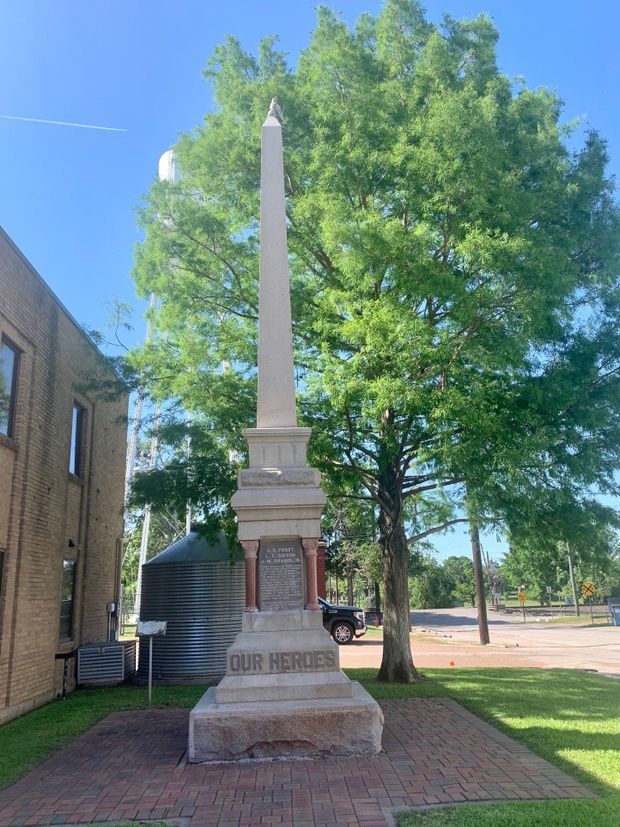
Okay, a little background. With its huge cotton plantations and vast seas of sugarcane, Fort Bend was before and remained long after the Civil War a black-majority county. Upon Emancipation, during and after Reconstruction, blacks and their white allies ran the county simply because they were able to garner the most votes. That's how it works in a democracy.
Because Republicanism had vanished in any meaningful way from Texas politics, this group had nominally joined the Democratic party, an entity that then had little meaning on its own in Fort Bend County, divided as it was into two sparring factions. What did resound was that this faction was effectively the party of blacks and their white allies -- perhaps one in ten of the white population of Fort Bend. Purportedly based on the songs of a local black tunesmith with a fixation on birds, this group came to be known as the Woodpeckers.*
Sworn enemies to the Woodpeckers, the white Jaybirds were dead-set on regaining control of the county courthouse by any means necessary. To them, Woodpecker rule was a special affront, as by that time, almost everywhere else in the Old South**, whites had found ways to disenfranchise black voters and thereby restore the old order of slavery days. Fort Bend County lingered as a throwback to "black Republicanism": the biracial coalition of freedmen, carpetbaggers, and scalawags who held power in the days of Reconstruction. That era ended pretty much everywhere else upon the (likely stolen) presidential election of Rutherford B. Hayes in 1876.
In the interest of brevity and an attempt at objectivity***, we'll let the Texas State Historical Association pick up the tale:
Former friends, neighbors, and relatives became bitter enemies as a result of the feud.
The election of 1888 engendered much bitterness. Serious altercations occurred between rival candidates. On August 2, 1888, J. M. Shamblin, Jaybird leader, was killed. In September Henry Frost, another Jaybird leader, was seriously wounded. The Jaybirds held a mass meeting at Richmond on September 6 and resolved to warn certain black people to leave the county within ten hours. They did so. Members of both factions were armed, and Texas Rangers were stationed in Richmond. The heaviest vote in the history of the county was polled on election day, which passed peacefully. Again the [Jaybirds] were defeated and the Woodpeckers left in control. After the election the breach between the factions widened. There were insults, assaults, threats, and denunciations-and two more killings. Kyle Terry, Woodpecker tax assessor, killed L. E. Gibson at Wharton on June 21, 1889; a week later Terry was killed by Volney Gibson. The county became an armed camp, and the "Battle of Richmond," on August 16, 1889, became inevitable.
An exchange of shots between J. W. Parker and W. T. Wade of the Woodpeckers and Guilf and Volney Gibson of the Jaybirds was the signal for the beginning of the battle. Most of the action took place around the courthouse, the National Hotel, and the McFarlane residence. After about twenty minutes of exchange of shots, the Woodpecker combatants retreated to the courthouse and left the Jaybirds in possession of the town. The casualties were heavy. Jaybirds from all parts of the county hurried to Richmond in anticipation of further hostilities, but there was no renewal of the conflict. The Houston Light Guards arrived to establish martial law, and Governor Lawrence S. Ross and the Brenham Light Guards arrived on August 17. Governor Ross remained in Richmond several days to act as mediator. A complete reorganization of county government resulted in the removal or resignation of all Woodpecker officials and the selection of Jaybirds or persons acceptable to the Jaybirds to fill the offices. After a turbulent era of more than twenty years, the white citizenry once more controlled the government.
A mass meeting was held at Richmond on October 3, 1889, to form a permanent organization to maintain white control. It passed a resolution to appoint a committee to draft a constitution for an association of the white people of Fort Bend County to control county affairs. A second meeting on October 22, 1899, organized the Jaybird Democratic Organization of Fort Bend County. Four hundred and forty-one white men signed the membership roll. The organization played the dominant role in Fort Bend County politics for the next seventy years.
So the "Our Heroes" the obelisk memorializes were the white men who died in defense of the violent, starkly racist toppling of a democratically elected county government and the subsequent enactment of seventy years of "white primaries."
That system remained in place until this patently unfair electoral system -- only whites were allowed to run for local office as Democrats by rule of the party, and only Democrats could win (because that was just the way it was) -- was ruled in violation of the 15th Amendment via Terry v. Adams, a local case that made it all the way to the United States Supreme Court in 1953.
I have a complicated and still-evolving position on the status of Confederate monuments and edifices bearing the names of ex-Confederates. To put my position in Houston terms, I think it's right and just that the names of schools honoring the likes of Robert E. Lee, Stonewall Jackson and Jefferson Davis were changed. These men were Confederate leaders who had no connection to Houston whatsoever, save that which comes from Houston having been a Confederate city.
Dick Dowling is more complicated -- yes, he rallied to the stars and bars, but no, he did not instigate the war nor preside over a vast army. It's unlikely he owned slaves though possible he hired them from others who did. His connections to Houston are undeniable, however, and as an Irish Catholic immigrant who fled 1850s Know Nothingism in New Orleans, a study of his life offers scholars a window into the complexity of antebellum America we neglect at our peril. (On one not-too-distant St. Patrick's Day, I gave the keynote speech at the foot of his statue to an audience of Confederate reenactors and other likely future Trump voters. My talk dwelled on the theme of Dowling's status as a persecuted immigrant and likened him to modern-day Houston heroes like chef Hugo Ortega, who came to Houston illegally as a teenager.)
And yet it was still right and proper that we changed the name of the school that once honored his memory. Had Dowling Street's name not have been changed to Emancipation Avenue, I might have been opposed, and I am opposed to removing his statue from Hermann Park. I would not be against a similar monument to the memory of the Unknown Slave somewhere more prominent than where the Dowling statue now stands, and I think there should be similar reminders of slavery wherever there still stand monuments for Confederate heroes. Perhaps Emancipation Avenue serves that function in Houston and no statue is needed.
Sidney Lanier was a name-change I opposed then and I still oppose now. The man was a decent poet who happened to serve ingloriously in the Confederate Army when he was not yet old enough to drink in modern America. How we renamed that school and not Oran Roberts Elementary -- which honors the man who presided over Texas's secession convention and served as a Confederate colonel -- I will never understand.
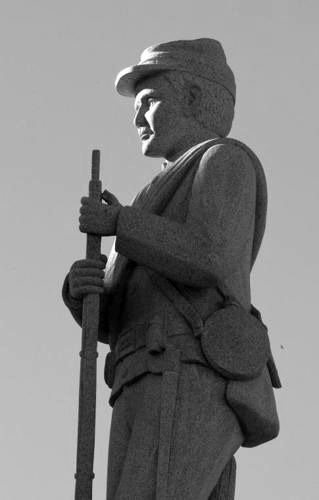
As with Lanier, I am similarly protective of monuments for generic Confederate common soldiers as seen on courthouse squares from Texas to Virginia. Yes, they fought in defense of slavery, a terrible cause to fight for. But do we really want to follow that road all the way to its dead end? We'd have to start questioning the existence of monuments to those killed in wars of dubious morality like Vietnam, the Mexican War, conflicts against the Native Americans, and the Spanish-American war, to name a few.
But this monument in Richmond? It's gotta go. This thing does nothing more than gloss over and sanctify American shame and hypocrisy. No young men were drafted and/or coerced by a mass movement to rally to the cause of white supremacy in Fort Bend County. Unlike the Civil War, there can be no debate on whether the cause of the Jaybirds was constitutional or unconstitutional: even in the 1880s, you could not disenfranchise people based on skin color, and that simple, brutal injustice is all that this monument attempts to enshrine. And yes, the Confederates fought to defend slavery, an institution they thought was imperiled, but one that was at the outbreak of the war entirely legal, which is not to say moral.
In this case, this monument should not simply be taken down and moved to private property. It should be toppled by the citizenry and pulverized with sledgehammers. That the seat of an extremely diverse and modernizing Texas county allows this burning cross in marble and granite to stand yet today in the very shadow of its courthouse is deeply shameful and should be an embarrassment, only it's not, per a fine Houston Chronicle article from 2017. A reporter found local whites still clinging to the same story the obelisk tells -- that the war wasn't about race but rather about ending corruption and restoring honest government -- and local blacks were simply and sadly resigned to its continued existence.
FOOTNOTES
- Here's another account on the origins of the names of the warring factions:
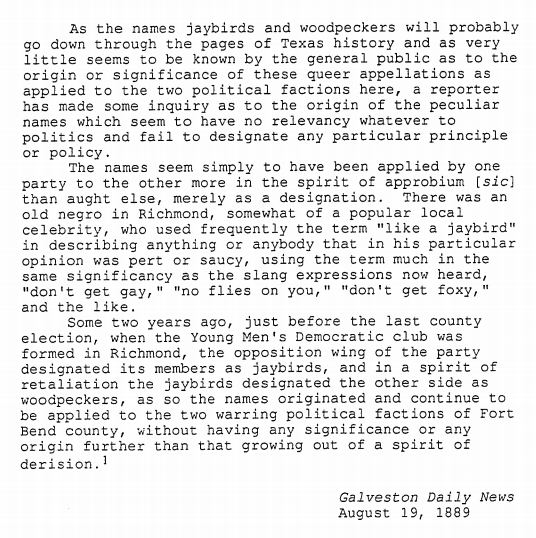
** I've weighed in myself on the Texan identity -- is it Southern, western, or unique? That question has an answer that has changed over time and indeed has always had different answers in various parts of Texas, but make no mistake: 19th Century Fort Bend County was about as Southern as Southern gets, or ever got, anywhere, including the Mississippi Delta, the Alabama Black Belt, or coastal South Carolina and Georgia, with slaves, many of whom lived on gigantic plantations, outnumbering whites by huge margins. In 1861, Fort Bend County's white men voted 100 percent in favor of secession.
*** For a full account of the Jaybird-Woodpecker War and its historical background, Leslie Anne Lovett's Rice Masters thesis is as good a place as any online. (The Galveston Daily News clipping above was the preface to this thesis.)
